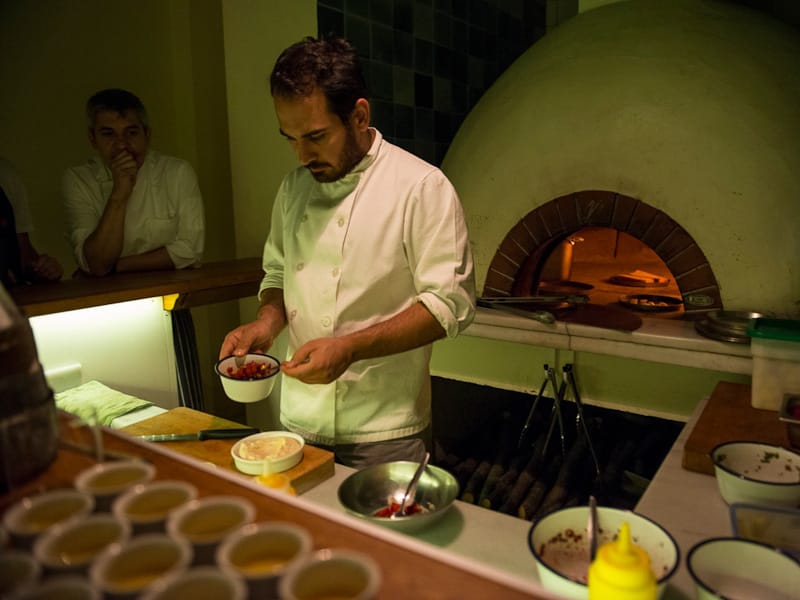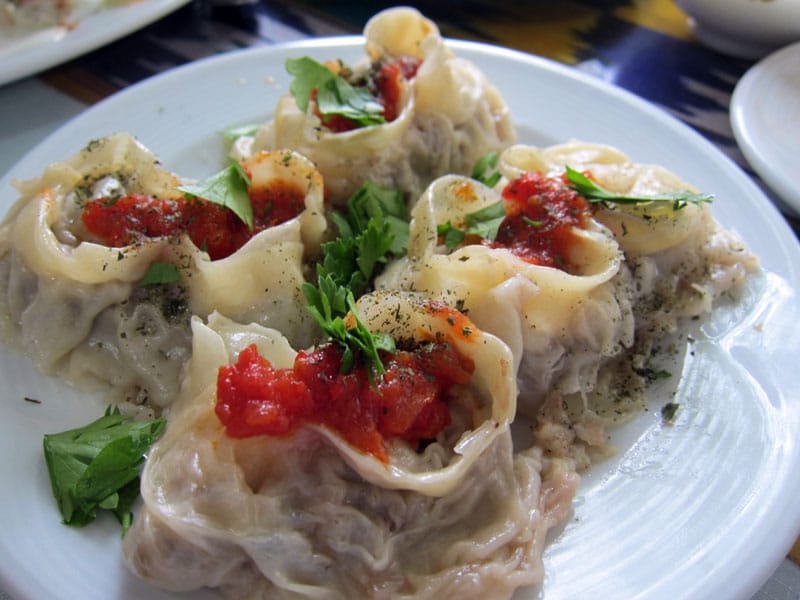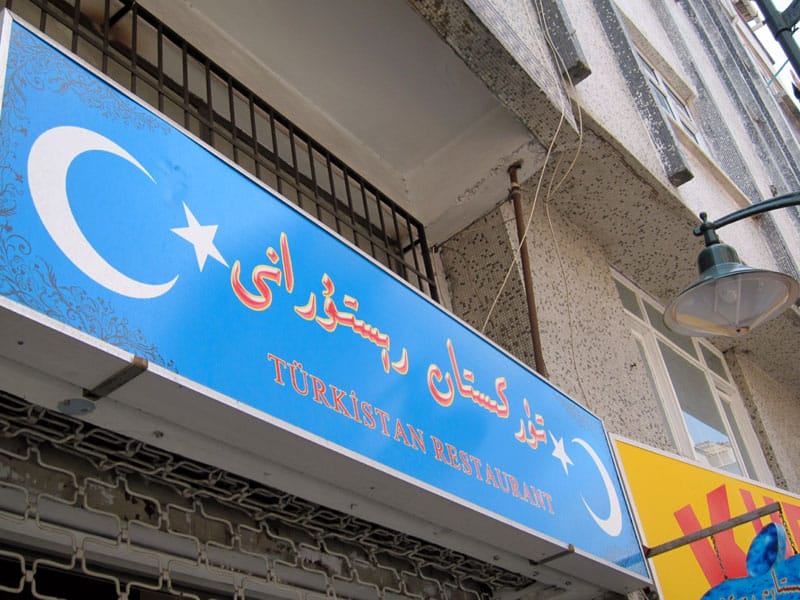It is puzzling that Istanbul, a city of some 15 million people with an increasingly lavish lifestyle, a world-famous cuisine and a booming tourism industry, has so little sparkle when it comes to fine dining. We’re surprised that the Prime Minister himself has not jumped into the culinary scrum by demanding no fewer than three Michelin stars from every restaurant. The city still has yet to answer with one.
In a recent New York Times column, veteran journalist and Istanbul denizen Andrew Finkel wrote, “The problem, I think, is that even those Turkish cooks who set out to do something different are still catering to what they think other people want to eat rather than staking their reputations on food they believe in.”
Luckily, the food chefs think people want to eat is moving away from pirated European cuisines and giving way to a movement based on local ingredients and traditional Turkish cooking techniques. The New Turkish Kitchen, as some are calling it, even in all of its locavore glory, might feel like an Istanbul Spring, but, in our opinion, the cooking lacks the innovation, risk and reward to call it “new.”
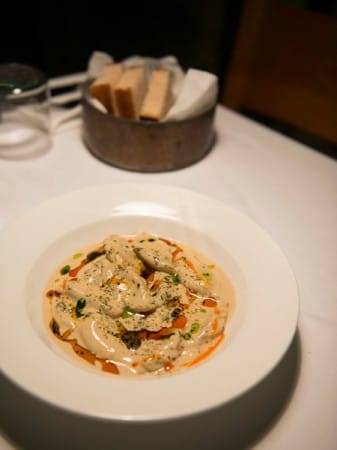 That’s where chef Civan Er of Yeni Lokanta comes in. The name itself is a nod to the movement: yeni means “new,” while a lokanta is a kind of inn or diner. His restaurant, recently opened in the Tünel neighborhood of Beyoğlu, is Anatolian stylish and completely original, from the menu down to the shabby-chic copper bread bowls. But where Er distinguishes himself is in the kitchen. He’s not just making a better mantı, he’s creating something radically different with recognizable materials that just happens to look like mantı.
That’s where chef Civan Er of Yeni Lokanta comes in. The name itself is a nod to the movement: yeni means “new,” while a lokanta is a kind of inn or diner. His restaurant, recently opened in the Tünel neighborhood of Beyoğlu, is Anatolian stylish and completely original, from the menu down to the shabby-chic copper bread bowls. But where Er distinguishes himself is in the kitchen. He’s not just making a better mantı, he’s creating something radically different with recognizable materials that just happens to look like mantı.
The chef’s playful wink appears throughout a meal of several small courses, which started with a few cold appetizers, most notably the green beans covered in “burnt” yogurt from Denizli. To make the yogurt, Er scalds the sheep’s milk before adding the culture. The spice octave and powerful funk of the yogurt in such a familiar context set the tone for a meal repeatedly hit with Er’s dissonant yet delicious chords. A simple little salad of samphire was spiked with crushed peanuts and dressed in citrus, quite unexpectedly conjuring Thailand for us.
From the wood-fired oven, the Antep sucuk over bean purée arrived in two lobes of the best sucuk we’ve ever had: heady garlic with a red-pepper punch and chunky with walnuts. Er works with a sucuk-maker in southern Turkey’s Gaziantep to get the spice combinations ramped up to the desired level, and they are further amplified by char and smoke in the oven. The mellow bean purée was a proper foil for the vivid flavors of the traditional Turkish sausage. Er says he serves a simple bread with meals in order to balance the bold contrasts on the plate but we found it ideal for sopping up sucuk and bean drippings.
Anyone looking to continue the meal in a conventional fashion will find an excellent crusty sea bass stuffed with a relish of onions and excellent beyaz peynir. We were more impressed by the oven-roasted chicken with chickpeas, but we suggest doubling back to the small plates, where the chef seems to have gathered most of his chips.
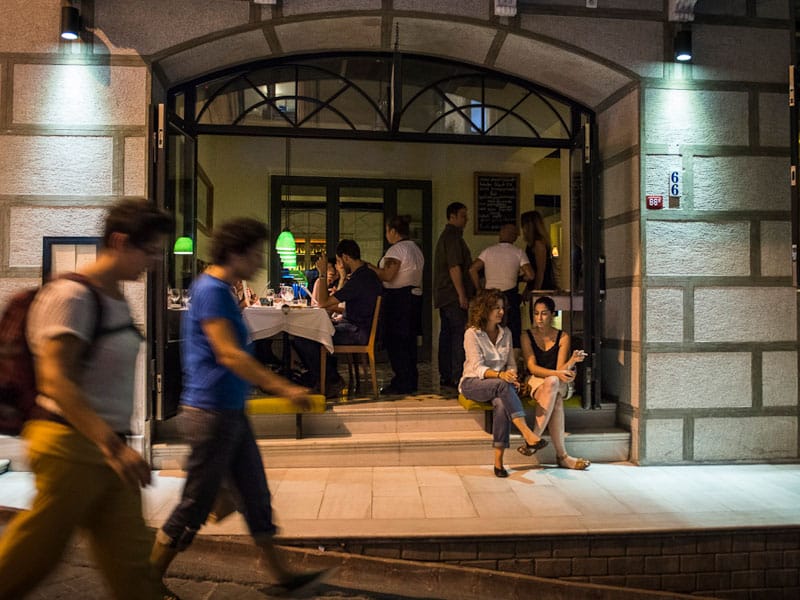
But leaving without dessert would rob the chef of his bow to the food nerds, the burlesque muhallebeli kadayıf kızartması, isli dondurma ve bal. As delicious as it is iconoclastic, this grand finale is technically the most complicated item on the menu, a nod to Er’s experiments while previously working in the progressive kitchen at Changa, one of the pioneers of what has turned into the New Turkish school of cooking. Freezing a traditional milk pudding allows him to coat it in the finely shredded pastry known as kadayıf (another classic from the Anatolian larder), which he then deep-fries and serves with water buffalo milk ice cream (the milk of which has been smoked, by the way) and drizzles with honey from Artvin, in northeastern Turkey. It’s sweet and savory, crunchy, hot, cold, gushy and rich but totally new to us and assembled of celebrated Anatolian parts we know.
If this is the New Turkish Kitchen, bring it on. We just hope all of the imitators who are sure to follow can keep the prices as low as Yeni Lokanta has. At 50 TL for lunch and about 100 TL for a full dinner, this is value, not to mention quality, that calls for recognition. But if we could offer one suggestion: the music should be better paired to the activity in the kitchen. Skip the flaccid sounds of Celine Dion – you deserve Zappa.
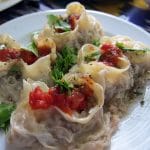 July 1, 2022 Özbek Sofrası
July 1, 2022 Özbek Sofrası
In the former Soviet Central Asian republics, the boilerplate restaurant menu consists […] Posted in Istanbul July 11, 2013 Özbek Sofrası
July 11, 2013 Özbek Sofrası
In the former Soviet Central Asian republics, the boilerplate restaurant menu consists […] Posted in Istanbul October 1, 2012 Türkistan Restaurant
October 1, 2012 Türkistan Restaurant
Thwap. Thwap. Thwap. “Do you hear that?” asked Sean Roberts, an expert on Uighur culture […] Posted in Istanbul
Published on September 12, 2013
Related stories
July 1, 2022
IstanbulIn the former Soviet Central Asian republics, the boilerplate restaurant menu consists of plov, lagman, shashlik and samsa. Tired-looking Uzbek, Kyrgyz, Kazakh and Tajik establishments all serve up the same limp noodles and oily rice with a shrug – it’s their job. In the markets of Samarkand, Osh and Almaty, we found some exciting exceptions…
July 11, 2013
IstanbulIn the former Soviet Central Asian republics, the boilerplate restaurant menu consists of plov, lagman, shashlik and samsa. Tired-looking Uzbek, Kyrgyz, Kazakh and Tajik establishments all serve up the same limp noodles and oily rice with a shrug – it’s their job. In the markets of Samarkand, Osh and Almaty, we found some exciting exceptions…
October 1, 2012
IstanbulThwap. Thwap. Thwap. “Do you hear that?” asked Sean Roberts, an expert on Uighur culture and politics and our dining companion for the day. “They’re making the lagman.” As if inspired by the image of a pizza-maker spinning dough on his finger like a basketball and tossing it in the air, lagman-makers have a similar…







































